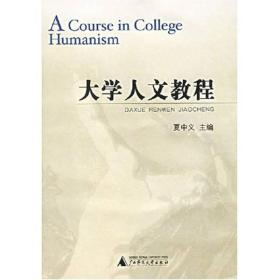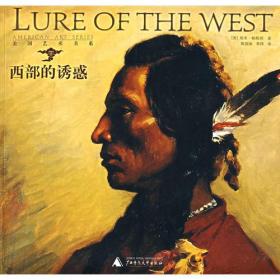
英语词汇学通论
¥ 53.54 7.1折 ¥ 75 九品
仅1件
北京东城
认证卖家担保交易快速发货售后保障
作者杨连瑞;陈颖;李旭奎
出版社清华大学出版社
出版时间2023-02
版次1
装帧其他
上书时间2024-10-13
- 最新上架
商品详情
- 品相描述:九品
图书标准信息
- 作者 杨连瑞;陈颖;李旭奎
- 出版社 清华大学出版社
- 出版时间 2023-02
- 版次 1
- ISBN 9787302616429
- 定价 75.00元
- 装帧 其他
- 开本 16开
- 纸张 胶版纸
- 页数 288页
- 字数 375千字
- 【内容简介】
- 本书以现代语言学理论为基础,以英语词汇为研究对象,共12章,内容涉及英语词汇的 构成、发展变化、形态结构、构成方式及语义关系、词义的发展变化、词的搭配与习语、美 式英语与英式英语的词汇区别以及英语词汇学习策略等。每章末设有活泼多样的练习题,以 深化读者对理论知识的理解与应用。书后另附美式英语与英式英语词汇对照表,供读者参考 使用。 本书适合普通高校英语专业学生和具有一定英语基础、对英语词汇学感兴趣的读者 使用。
- 【作者简介】
- 杨连瑞,文学博士,中国海洋大学教授,博士生导师,主要从事英语语言学、二语习得等教学研究工作。国务院政府特殊津贴专家,教育新世纪优秀人才,青岛市高校教学名师,国务院学位委员会全国翻译专业学位教育指导委员会委员,中国二语习得研究会会长,中国教育语言学研究会副会长等。
- 【目录】
-
Chapter 1 Introduction1
11 What Is Lexicology?2
12 English Lexicology and Its Relation to Other Disciplines2
13 Methods of Word Study 3
14 Aims and Significance of the Course4
Exercises4
Chapter 2 Basic Concepts of Words and Vocabulary7
21 Definition of a Word8
22 Sound and Meaning 9
23 Sound and Form 9
24 Vocabulary 10
25 Classification of Words11
251 Basic Word Stock and Non-Basic Vocabulary 11
252 Content Words and Functional Words 14
253 Native Words and Borrowed Words14
Exercises 15
Chapter 3 The Developing English Vocabulary17
31 The Indo-European Language Family 18
32 A Historical Overview of the English Vocabulary 18
321 The Period of Old English (450 CE–1100 CE)19
322 The Period of Middle English (1100 CE–1500 CE)20
323 The Period of Modern English (After 1500 CE)21
33 Growth of Present-Day English Vocabulary 23
331 The Rapid Development of Science and Technology 23
332 Political, Economic, and Cultural Changes in Society24
333 The Formation of New Vocabulary28
34 Modes of Vocabulary Development 29
Exercises 30
Chapter 4 Morphological Structure of Words33
41 The Concept of Morpheme 34
411 Types of Morphemes 34
412 Roots, Stems, and Bases36
42 Major Processes of Word Formation 37
421 Derivation38
422 Conversion44
423 Compounding48
43 Minor Processes of Word Formation 54
431 Clipping54
432 Blending55
433 Acronymy: Initialisms and Acronyms57
434 Back-Formation59
435 Words from Proper Names60
436 Miscellaneous63
Exercises 64
Chapter 5 Word Meaning, Polysemy, and Homonymy67
51 Motivation 68
511 Phonetic Motivation68
512 Morphological Motivation69
513 Semantic Motivation69
52 Main Types of Word Meaning 70
521 Grammatical Meaning70
522 Lexical Meaning71
523 Social or Stylistic Meaning73
524 Affective Meaning77
525 Reflected Meaning79
526 Collocative Meaning80
527 Contextual Meaning80
53 Componential Analysis and Semantic Features 81
531 Componential Analysis on the Basis of Semantic Contrast82
532 The Role of Componential Analysis in English Lexical Teaching83
Exercises 84
Chapter 6 Sense Relations Between Words87
61 Synonymy 88
611 Complete Synonyms88
612 Relative Synonyms89
613 Other Types of Synonymy94
62 Antonymy 95
621 Types of Antonyms95
622 Different Antonyms of One Word97
623 Marked and Unmarked Members98
624 Asymmetry in the Pragmatic Uses 99
625 The Rhetorical Use of Antonyms100
63 Hyponymy101
64 Polysemy103
641 Definition103
642 Two Processes Leading to Polysemy103
65 Homonymy104
651 Types of Homonyms105
652 Sources of Homonyms106
653 The Rhetorical Features of Polysemy and Homonymy107
66 Meronymy/Holonymy108
661 Definition108
662 Distinction Between Meronymy/Holonymy and Hyponymy 108
663 Types of Meronymy109
67 Semantic Field109
Exercises 111
Chapter 7 Changes in Word Meaning115
71 Causes of Changes in Word Meaning116
711 Historical and Social Causes 117
712 Psychological Cause 119
713 Linguistic Cause 121
714 Foreign Influences 122
72 Four Tendencies in Semantic Change 122
721 Extension of Meaning123
722 Restriction of Meaning125
723 Elevation of Meaning 127
724 Degeneration of Meaning 128
73 Semantic Changes Resulting from the Figurative Use of Words130
731 Metaphor131
732 Synaesthesia 132
733 Metonymy 133
734 Synecdoche 133
Exercises135
Chapter 8 Meaning and Context137
81 Types of Context138
811 Linguistic Context138
812 Extra-Linguistic Context141
82 Role of Context in Deciding Word Meaning143
821 Eliminating Ambiguities143
822 Specifying Referents and the Range of the Meaning 145
823 Conveying Emotional Overtones 147
83 How to Guess Word Meaning from Context149
831 Lexical Clues149
832 Syntactical Restrictions 152
833 Semantic or Logical Connections 153
834 The Role of Topic Sentence 154
835 The Role of Background Knowledge 155
Exercises156
Chapter 9 Multi-Word Expressions159
91 Characteristics of Multi-Word Expressions160
92 Importance of Multi-Word Expressions163
93 Common Types of Multi-Word Expressions164
94 Challenges of Learning Multi-Word Expressions for L2 Learners165
Exercises168
Chapter 10 Idioms173
101 Definition of Idioms174
102 Sources of English Idioms175
1021 From Daily Life175
1022 From Food and Cooking176
1023 From Body Parts177
1024 From Names of Animals178
1025 From Military or Sailor’s Life179
1026 From Literary Works180
1027 From Other Languages180
1028 From Other Sources181
103 Classification of English Idioms181
1031 Nominal Phrases182
1032 Verbal Phrases184
1033 Adjectival Idiomatic Expressions188
1034 Adverbial and Prepositional Idiomatic Expressions190
1035 Proverbs192
104 Syntactic, Structural, and Stylistic Features194
1041 Syntactic Function194
1042 Structural Features196
1043 Stylistic Features199
105 Beware of Translation Traps201
Exercises 205
Chapter 11 Differences Between American English and British English209
111 Growth of American English210
1111 Before Independence (1607 CE–1789 CE)211
1112 From Independence to the Early 19th Century (1789 CE–1860 CE)212
1113 From the Early 19th Century to the Present Time (1860 CE–Present)213
112 Characteristics of American English214
1121 Conservatism and Innovation214
1122 Heterogeneity217
1123 Uniformity in Speech 219
1124 Verbose and Plain Style in Writing220
1125 Popularity of Slang221
113 Differences Between American English and British English 222
1131 Differences in Pronunciation222
1132 Differences in Spelling225
1133 Differences in Grammar and Usage227
1134 Differences in Vocabulary231
114 A Brief Summary 235
Exercises 236
Chapter 12 Vocabulary Learning237
121 Vocabulary Knowledge 238
1211 Components of Vocabulary Knowledge238
1212 Receptive and Productive Vocabulary Knowledge240
122 Approaches to Vocabulary Learning 241
1221 Incidental Vocabulary Learning241
1222 Intentional Vocabulary Learning244
123 Resources for Learning Vocabulary 246
1231 Dictionaries246
1232 Online Resources for Vocabulary Learning250
References255
Appendix: Difference Between American English and British English265
点击展开
点击收起
相关推荐
— 没有更多了 —

















以下为对购买帮助不大的评价